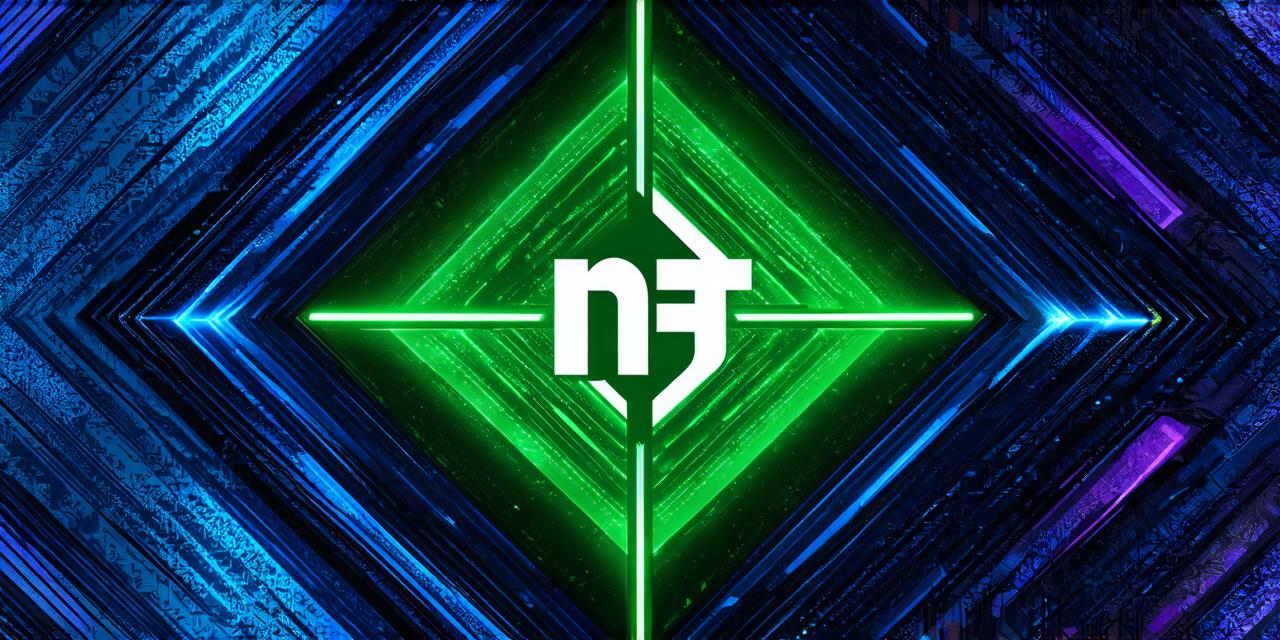Non-Fungible Tokens (NFTs) have been gaining popularity in recent years, especially in the art and collectibles industry. They offer a unique way to represent ownership of digital assets and have the potential to revolutionize how we interact with digital content.
Understanding NFTs and the Blockchain
Before we dive into the various ways to store NFTs on the blockchain, let’s first understand what NFTs are and how they work.
An NFT is a digital asset that represents ownership of unique content such as art, music, videos, or even tweets. It is stored on a blockchain, which is a decentralized ledger that allows for secure and transparent tracking of transactions. The blockchain provides a permanent and immutable record of the ownership history of an NFT, making it easy to verify and transfer ownership.
When creating an NFT, developers can choose from various standards such as ERC-721, ERC-1155, or Flow. Each standard has its own set of rules and requirements for creating and managing NFTs on the blockchain.
Storing NFTs on the Blockchain: A Comparison
Now that we have a basic understanding of what NFTs are and how they work let’s explore the various ways to store them on the blockchain.
1. On-Chain Storage
On-chain storage is one of the most popular methods for storing NFTs on the blockchain. It involves storing the NFT data directly on the blockchain, which provides a secure and transparent way to track ownership history.
Advantages:
- Provides a permanent and immutable record of NFT ownership history
- Allows for efficient and fast transaction processing
- Ensures that NFTs are secure from potential hacks or attacks
Disadvantages:
- Can be expensive to store large amounts of data on the blockchain due to gas fees
- May not be suitable for projects with high levels of activity or transactions
2. Off-Chain Storage
Off-chain storage involves storing NFT data outside of the blockchain, but still on a secure and decentralized network. This can be done using InterPlanetary File System (IPFS), Swarm, or other similar technologies.
Advantages:
- Reduces gas fees by storing NFT data off-chain
- Provides more flexibility in terms of scalability and performance
- Can be used for projects with high levels of activity or transactions
Disadvantages:
- May not provide the same level of transparency and security as on-chain storage
- Requires additional infrastructure to maintain and manage NFT data off-chain
3. Hybrid Storage
Hybrid storage involves using a combination of on-chain and off-chain storage to store NFTs. This can be done by storing metadata on the blockchain while storing the actual content off-chain.
Advantages:
- Provides the best of both worlds: transparency and security of on-chain storage with the flexibility and scalability of off-chain storage
- Reduces gas fees by storing only metadata on the blockchain
Disadvantages:
- Requires additional infrastructure to manage the hybrid storage system
- May be more complex to implement than on-chain or off-chain storage alone
Case Studies: Successful NFT Projects and Their Storage Solutions
Now that we have explored the various ways to store NFTs on the blockchain let’s look at some real-life examples of successful NFT projects and how they have utilized different storage solutions.
1. CryptoKitties
CryptoKitties is a popular NFT project that allows users to breed, buy, and sell unique digital cats on the Ethereum blockchain. The project uses on-chain storage for its NFT data, which provides transparency and security for ownership history.
2. Rarible
Rarible is an open marketplace for buying, selling, and trading NFTs on the Ethereum blockchain. The platform utilizes off-chain storage for its NFT data, which allows for greater scalability and performance.
3. NBA Top Shot
NBA Top Shot is a digital collectibles platform that allows users to buy, sell, and trade officially licensed NBA collectibles on the Flow blockchain. The platform uses hybrid storage for its NFT data, which provides transparency and security with the flexibility of off-chain storage.
Best Practices for Security and Scalability
Now that we have looked at some real-life examples of successful NFT projects let’s discuss best practices for security and scalability when storing NFTs on the blockchain.
1. Use a Reputable Standard
When creating an NFT, it’s essential to use a reputable standard such as ERC-721 or ERC-1155. These standards provide a framework for creating and managing NFTs on the blockchain and ensure compatibility with other projects and platforms.
2. Implement Security Measures
Security is crucial when storing NFTs on the blockchain. Developers should implement security measures such as encryption, access controls, and regular audits to protect their NFT data from potential hacks or attacks.
3. Optimize for Scalability
Scalability is also important when storing NFTs on the blockchain. Developers should optimize their storage solution for performance and efficiency by minimizing gas fees and reducing the amount of data stored on the blockchain.
FAQs
1. What are the benefits of on-chain storage for NFTs?
- Provides a permanent and immutable record of NFT ownership history
- Allows for efficient and fast transaction processing
- Ensures that NFTs are secure from potential hacks or attacks
2. What are the disadvantages of on-chain storage for NFTs?
- Can be expensive to store large amounts of data on the blockchain due to gas fees
- May not be suitable for projects with high levels of activity or transactions
3. What is off-chain storage for NFTs?
Off-chain storage involves storing NFT data outside of the blockchain on a secure and decentralized network such as IPFS or Swarm.
4. What are the advantages of off-chain storage for NFTs?
- Reduces gas fees by storing NFT data off-chain
- Provides more flexibility in terms of scalability and performance
- Can be used for projects with high levels of activity or transactions
5. What are the disadvantages of off-chain storage for NFTs?
- May not provide the same level of transparency and security as on-chain storage
- Requires additional infrastructure to maintain and manage NFT data off-chain

6. What is hybrid storage for NFTs?
Hybrid storage involves using a combination of on-chain and off-chain storage to store NFTs. This can be done by storing metadata on the blockchain while storing the actual content off-chain.
7. What are the advantages of hybrid storage for NFTs?
- Provides the best of both worlds: transparency and security of on-chain storage with the flexibility and scalability of off-chain storage
- Reduces gas fees by storing only metadata on the blockchain
8. What are the disadvantages of hybrid storage for NFTs?
- Requires additional infrastructure to manage the hybrid storage system
- May be more complex to implement than on-chain or off-chain storage alone
